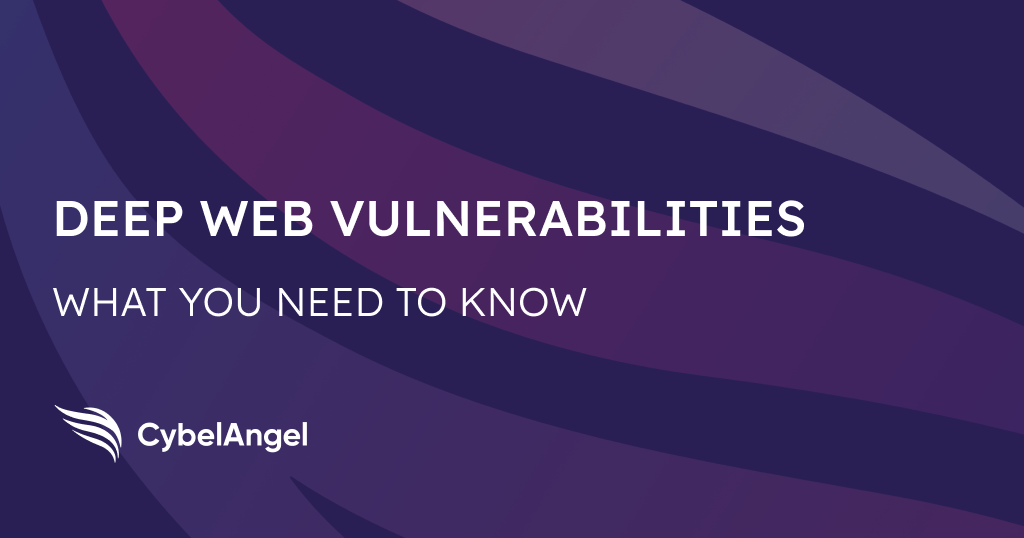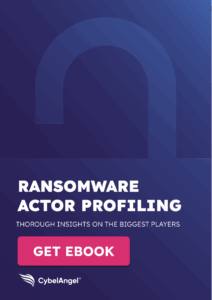What New Deep Web Vulnerabilities are Targeting Your Brand?

Table of contents
Cyber criminals are wickedly inventive, constantly devising new ways to harm innocent web users for profit. They lurk on the part of the internet you can’t find on major search engines, such as dark web forums and marketplaces trading stolen data.
Companies of all sizes are increasingly finding themselves in the crosshairs of malicious hackers, leaving victims wondering how they got in. So, what new deep web vulnerabilities should your company be aware of, and what are the differences between the dark web and the deep web?
We will delve into all this and more in part 5 of this in-depth guide on dark web monitoring.
Have you missed previous blogs in this series?
- What is Dark Web Monitoring?[Plus, How Will it Evolve in 2024?]
- Understanding Dark Web Intelligence: How Cybercriminals Share Intel
- Dark Web Takedowns in 2023 | An Overview for CISOs
- Top Threat Actors on the Dark Web | 2023 Recap
Deep web vs dark web: Understanding the difference
Though related, there are important nuances between terms like deep web vs dark web vs shadow web.
The surface web includes all parts of the internet that are easily accessible to the public through search engines.
The deep web refers to parts of the internet not listed on search engines, including the kinds of web pages most web users access, such as pay-walled sites, email messages, and private databases.
The dark web also refers to parts of the internet not listed on search engines, but unlike deep web sites, they are related to cyber crime and other illegal activities. Cyber criminals gather on the dark web to trade information on dark web forums and buy and sell data in dark web markets. These sites require special software like the Tor browser to access.
The shadow web is a more nefarious, deeper level of the dark web, harboring serious criminal activity and unlawful content.
While all of these parts of the web are relevant to cyber security, the deep web is increasingly targeted with different emerging threats.
Emerging cyber threats on the deep web
Cyber criminals constantly adapt to changes in web user habits and leverage technological advancements to carry out their attacks. Increasingly, they are targeting deep web vulnerabilities. Thanks to the growing popularity of cloud services, most companies have an increasing number of deep web assets, making it complicated to track all assets and access permissions.
With this in mind, CISOs should be aware of some vulnerabilities that are becoming popular targets:
- Phishing attacks using deep web services: Social engineering threats are evolving. On the one hand, most email services can filter spam messages, reducing the efficacy of conventional phishing emails. On the other hand, many employees are now using their own devices as workplaces have transitioned to remote or hybrid work with BYOD policies, creating potential security issues. Hackers have adapted to these changes and are increasingly launching attacks through trusted deep web services like Google, AWS, and Microsoft.
- Spear phishing attacks using AI and LLMs: The proliferation of artificial intelligence language models has created new opportunities for cyber criminals to access your deep web assets. Thanks to AI, hackers can send out “spear phishing attacks” that target many victims by leveraging stolen personal information specific to the individual, increasing the chances targets will fall for the scam.
- Third parties: Third parties like partners, suppliers, and others need access to some data to do business with you. Much of these communications and shared documents are over deep web communications like email and cloud services. However, this access must be carefully controlled as the plethora of outside entities with access to your data also presents a risk. 79% of our data breach prevention alerts to clients in 2023 came from causes outside the perimeter.
- Misconfigured cloud drives: Clouds are an increasingly popular way to save money on storage, allowing providers like Google or Dropbox to store your data remotely. Despite their convenience, these deep web services can pose serious risks if misconfigured. The wrong permission settings can expose your data and cause a costly data breach.
The cost of a deep web data breach
Despite their conveniences, cloud and email services can be tempting targets for hackers if not adequately protected, causing costly data breaches.
Data breaches can cost your business millions from stolen financial information, fines, and legal fees alone. Still, the price is more than financial. Stolen intellectual property could cost you your competitive advantage, and damage to customer trust could cost your company’s reputation. A data breach can also leave your business vulnerable to future attacks like ransomware.
Threat intelligence is increasingly crucial to identifying potential threats and finding zero-day vulnerabilities before cyber crime even happens. CybelAngel constantly works to stay on top of emerging threats – scanning 4.3 billion IP addresses every 24 hours, including deep web assets like connected storage devices, cloud storage, and cloud applications.
Since we constantly crawl the dark web, we are always looking for new dark web sites that harbor criminal activity and share deep web intel on vulnerable targets. This dark web intelligence is critical as new dark web forums appear soon after old ones like raidforums are shut down by law enforcement agencies like the FBI.
Thanks to our state-of-the-art machine learning algorithms and expert cyber security analysts, we deliver zero false positives, saving you valuable time.
Still, considering the high costs of deep web data breaches and the vital importance of threat intelligence, it is essential to understand how hackers gain access to deep web assets in the first place.
How do hackers gain access to your deep web assets?
Cyber criminals have a variety of methods to access vulnerable data stored on the deep web. Weak passwords, misconfigured security settings, and unwitting humans are all potential entry points for hackers, and only one of these links needs to break for them to gain initial access and steal your data successfully. Here are a few main ways they can get in:
Social Engineering: Social engineering attacks such as phishing and spear phishing attempt to trick authorized users into granting hackers access to vulnerable information stored on the deep web.
Human Error: If users with access to your systems don’t follow proper cyber hygiene measures, including those for deep web service logins, they can leave your systems vulnerable to cyberattacks.
Hacking: Hackers may attempt to directly circumvent security measures on cloud services by exploiting misconfigured settings via targeting a zero-day vulnerability or via brute forcing, which exploits weak passwords.
Malware: Malicious software (malware) like XSS, infostealers, or even ransomware grants unauthorized parties access to your systems, allowing them to steal login information for deep web assets and thus access their contents.
So now that you know how hackers can access your deep web assets, what can you do to keep them safe?
How can you keep your deep web assets safe?
Follow cyber hygiene best practices to prevent hackers from gaining initial access to your cloud storage and applications, email, and other deep web services. Here are some key steps to keep your deep web assets safe:
- Continuously monitor threats to your deep web assets with dark web monitoring.
- Address any known vulnerabilities as soon as possible. Ensure adequate data protection and access point control.
- Create strong passwords and regularly rotate them. Enable two-factor authentication.
- Train employees to recognize potential risks and know how to handle a suspicious link or message.
- Regularly perform data backups.
- Develop a risk mitigation strategy.
While good cyber hygiene is crucial to keeping your deep web assets safe, it’s not enough to protect against today’s threats. Consider using CybelAngel for continuous asset monitoring and discovery, data breach protection, dark web monitoring, and even deep web monitoring.
What is deep web monitoring?
Deep web monitoring involves monitoring deep web assets for vulnerabilities, like forgotten cloud instances. It’s part of the continuous monitoring and discovery CybelAngel performs on your company’s entire cyber “ecosystem.”
While deep web monitoring is essential, keeping an eye on the dark web is also crucial to identify threats to your company hiding in cyber criminal conversations on dark web forums.
CybelAngel also conducts dark web monitoring, sifting through thousands of dark net sites to find your deep web vulnerabilities. We can quickly identify potential threats to your deep web assets, such as those stored in cloud computing and messaging services. By constantly crawling the dark web, we can detect potential data leaks and cyber attacks before they happen.
Whether it’s a leaked password for sale, deep web intel on misconfigured security settings, or stolen data from a compromised server, it’s crucial to know if your business is at risk of a cyber attack.
Take a complimentary exposure scan (with results in 72 hours) to see it for yourself.
When it comes to cyber security threats, the deep web and dark web are related, so it’s essential to understand the differences between the two and how they both fit into any cyber security strategy.
Wrapping up: key takeaways
Here is a quick recap to sum up this article with 4 key takeaways:
- Deep web vs dark web: These two similar terms are, in fact, completely different. Neither are indexed by search engines, but the deep web includes sites used by most web users, while the dark web is a hiding place for cyber criminals conducting illegal activities.
- Deep web assets are a growing target: If not properly secured, the cloud services, email, and other deep web services your company relies on to function can become a target.
- Data breaches can be costly: The cost of doing nothing is higher than you think. A data breach can cost millions, but it can also cost you your competitive advantage and customer trust.
- Prevention is key: Data breaches are extremely costly. Good cyber hygiene and dark web monitoring are critical to preventing hackers from gaining initial access to your deep web assets.
Now that you know how the deep web factors into your IT infrastructure, keep your deep web assets safe with CybelAngel.
Follow all new content releases on our blog via our social channels, LinkedIn, and Twitter.
